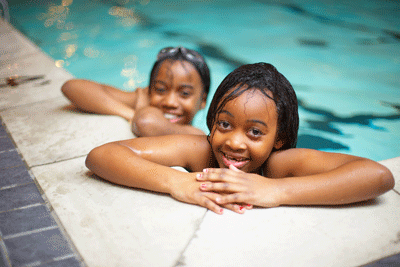According to the latest statistics from the Centers for Disease Control and Prevention, children ages one to four have the highest drowning rates. And, behind motor vehicle crashes, fatal drowning remains the second-leading cause of unintentional injury-related death among children between the ages of one and 14 years old.
Populations of children at an increased risk of drowning, include:
•African American children. The fatal unintentional drowning rate for African Americans was significantly higher than that of Caucasian children across all ages. The disparity is most pronounced among African American children between the ages of five and 19 years old, as they drown in swimming pools at rates nearly six times higher than those of Caucasian children.
•Children with autism who are prone to wandering. In fact, drowning is the cause of death for nearly three out of every four children with autism who wander off alone.
While these statistics are alarming, several practical steps can be taken to help reduce the risk of drowning. Doctors at Saint Agnes Healthcare offer the following layers of protection to help keep children safe in and around pools this summer:
When not swimming:
•Use barriers. Barriers, such as pool fencing, can help prevent young children from gaining access to the pool area without caregivers’ awareness. A four-sided isolation fence (separating the pool area from the house and yard) and standing at least four feet tall can help reduce a child’s risk of drowning by 83 percent compared to three-sided property-line fencing. Having a self-closing and self-latching gate can serve as an added layer of protection.
•Use pool covers, alarms and locks.
Use pool covers that completely blanket the entire pool surface and do not allow space for a child to slip under or for water to accumulate on the surface. Use alarms to indicate whether someone is near the pool gate or swimming area. Exterior door alarms, door latches, window guards, doorknob covers cam also help to prevent children from entering the pool area unsupervised. Make sure members of the household remember to always close the door behind them.
•Remove all pool toys and empty wading pools when not in use. This can help to prevent children from being tempted to enter pool areas unsupervised.
When children are swimming:
•Keep a close eye. Provide close, constant, undistracted supervision in and around water. With toddlers practice “touch” supervision— where you are within arm’s reach and close enough to touch them. While floatation devices can provide a sense of safety, they aren’t a substitute for adult supervision.
•Designate an adult to serve as a “Water Watcher.” No cell phone, no conversation, no alcohol. Commit to short ‘shifts’ and rotate duties with another designated adult “Water Watcher.” It is also good to have an adult on-site who knows CPR.
•Start swimming lessons ASAP, and as early as age one. However, remember that children taking swimming lessons and experienced swimmers are not “drown proof” and still require safety precautions.
